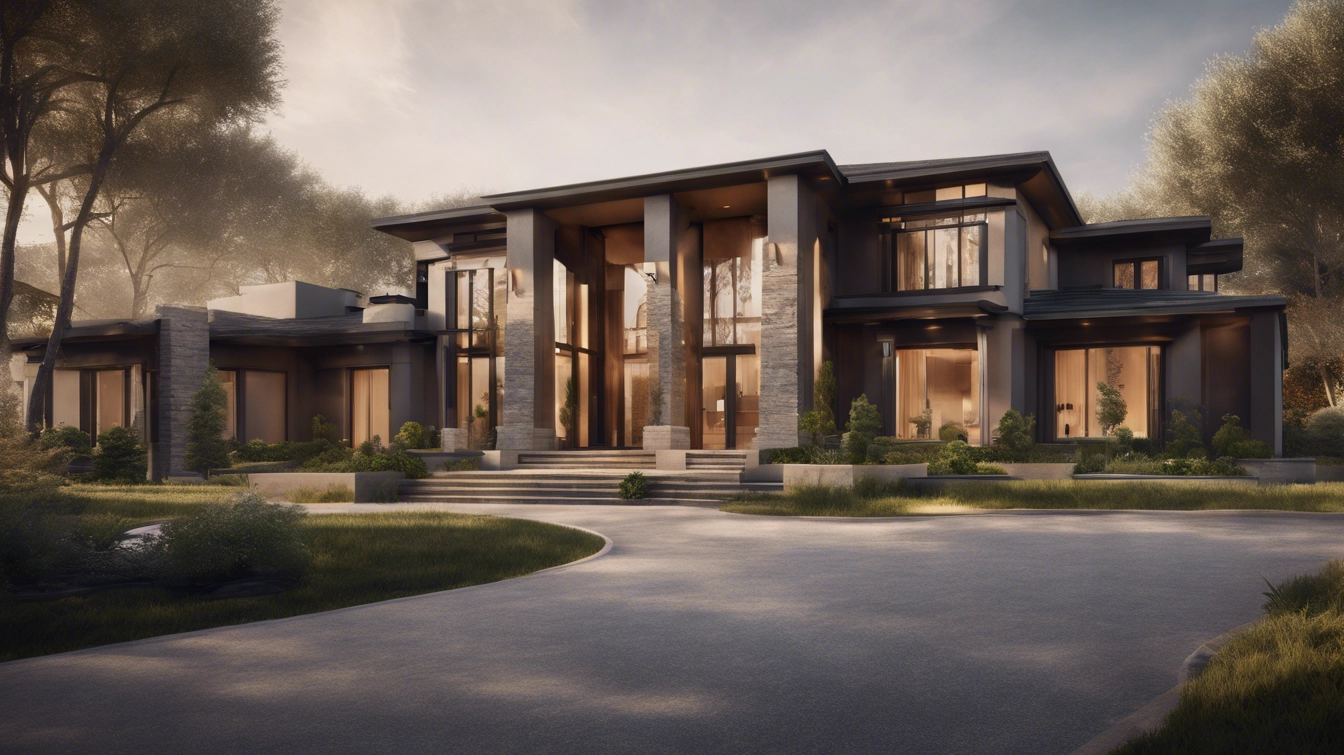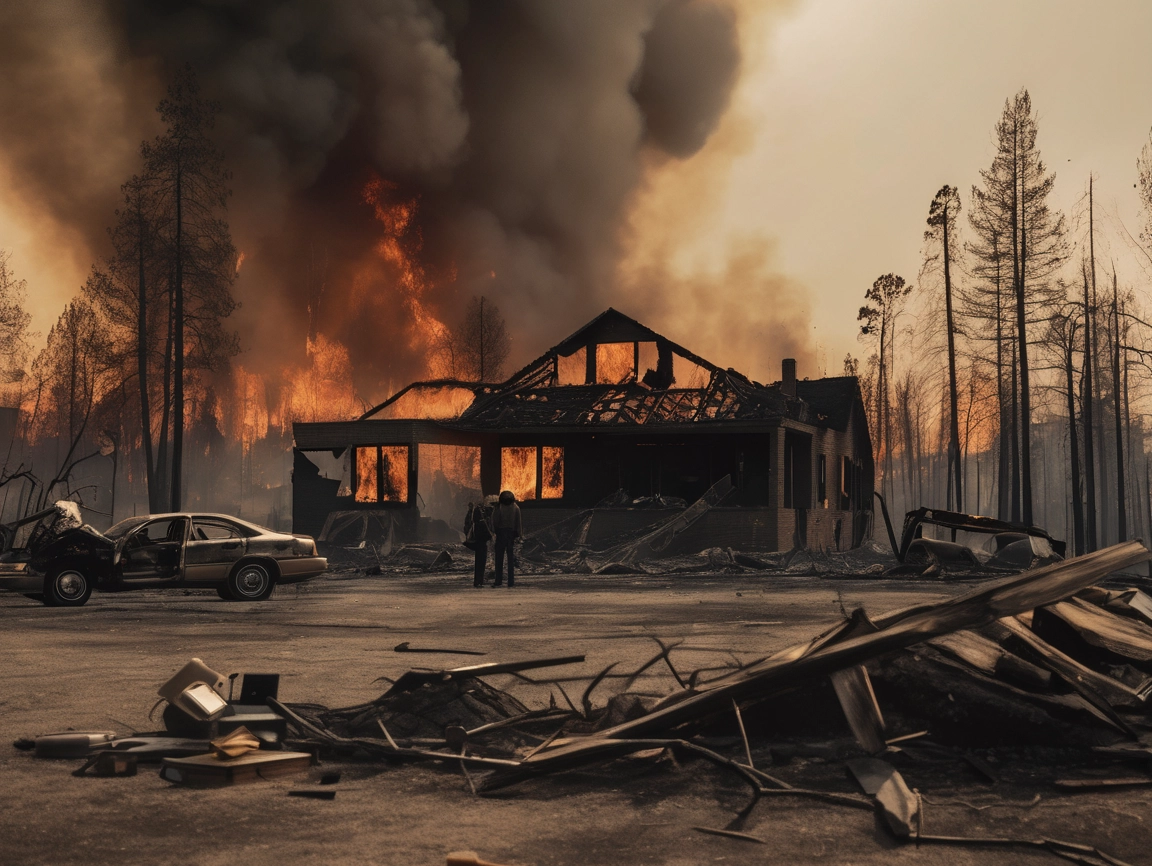Why Home Hardening Matters
Wildfires pose an increasing risk to residential areas, particularly in fire-prone regions. Home hardening focuses on reinforcing structures to withstand heat, flames, and embers. This guide details essential improvements that can be made to protect your home from wildfires, enhancing safety and insurability.
1. Roof Enhancements
- Opt for Class A Fire-Rated Materials: Choose from metal, clay tiles, or treated shingles. This type of roofing offers the highest level of fire resistance.
- Install Fire-Blocking Roof Underlayment: Place a fire-resistant barrier under the roof covering for an additional layer of protection.
- Add Ridge and Gable Covers: Install protective covers to seal roof joints and gable ends, preventing ember penetration.
2. Vent Protection Strategies
- Use Ember-Resistant Vent Screens: Replace or upgrade to vents with 1/8-inch mesh or specialized ember-resistant vents to stop embers from entering the home.
- Install Baffled Soffit Vents: Baffled vents help reduce direct ember entry while allowing adequate attic ventilation.
- Consider Automatic Vent Closures: These vents close automatically when exposed to extreme heat, adding an extra safeguard.
3. Eaves, Soffits, and Overhangs
- Enclose Eaves and Soffits: Use fire-rated materials to box in these areas, minimizing entry points for embers.
- Apply Fire-Resistant Paint: Coat eaves and overhangs with fire-resistant paint to slow down the ignition process during a fire.
4. Windows and Skylights
- Install Dual- or Triple-Pane Windows: Windows with tempered glass provide better resistance to heat compared to single-pane windows.
- Use Fire Shutters or Screens: For added protection, install exterior fire shutters or screens that can be closed during fire threats.
- Upgrade Skylights to Polycarbonate: Choose fire-rated polycarbonate skylights over traditional acrylic, which can melt under high heat.
5. Exterior Walls and Siding
- Select Non-Combustible Siding: Materials like stucco, fiber-cement, and brick offer better protection than wood or vinyl.
- Seal Gaps and Cracks: Use fire-rated sealants to close gaps around doors, windows, and vents to prevent ember entry.
- Add a Fire-Resistant Barrier Layer: If renovating, consider adding a fire-resistant layer beneath the siding to increase defense.
6. Deck and Patio Solutions
- Build with Non-Flammable Materials: Choose fire-resistant decking, such as composite materials designed to resist ignition.
- Add Ember-Resistant Skirting: Install non-combustible skirting to block embers from accessing the area beneath your deck.
- Install Deck Sprinklers: Consider deck-specific sprinkler systems that can be activated during a wildfire.
7. Fencing and Perimeter Defenses
- Use Noncombustible Fencing: Replace wood fences within 5 feet of the home with metal, masonry, or other fire-resistant materials.
- Create Gaps Between Fencing and Home: If using a combustible fence, add a non-flammable section between it and the home to act as a break.
- Install Fire-Retardant Barriers: Use fire-retardant coatings or panels on existing fences to improve their fire resistance.
8. Landscaping and Yard Management
- Strategic Landscaping with Defensible Zones: Maintain separate defensible space zones as advised by NFPA, with non-combustible materials close to the house and fire-resistant plants further out.
- Create Firebreaks: Use gravel, pavers, or concrete pathways as firebreaks to limit fire spread.
- Choose Fire-Resistant Plants: Select plants with high moisture content and minimal sap or resin, which are less likely to ignite.
9. Add-On Safety Features
- Install Fire Sprinkler Systems: Roof and perimeter sprinkler systems can be a proactive measure for keeping your home cool and wet during a fire.
- Apply Long-Term Fire Retardants: Have vulnerable exterior areas treated with long-term fire retardants that adhere to NFPA standards.
- Upgrade to Metal Gutters: Metal gutters are less likely to ignite compared to plastic and can withstand higher temperatures.
10. Maintenance and Routine Checks
- Regularly Clean Roof and Gutters: Remove leaves, pine needles, and other flammable debris monthly.
- Inspect Exterior Vents and Screens: Ensure they remain intact and free from damage.
- Trim Overhanging Trees: Keep branches at least 10 feet from your roofline to prevent fire spread.
- Ensure All Eaves and Roof Gaps Are Properly Sealed: Regularly inspect and maintain sealants to prevent embers from finding a way in.
Ready to Secure Your Home?
Taking these home hardening steps can significantly improve your home’s resilience to wildfires. While some projects can be DIY, others may require professional expertise to ensure effectiveness and compliance with local regulations. Allied Disaster Defense offers comprehensive assessments and Done-For-You services to guide and complete your home hardening projects.
Contact Us Today Reach out to Allied Disaster Defense at 310-620-9442 to schedule a home hardening consultation or set up a virtual assessment. Protect your home before the next wildfire season.



